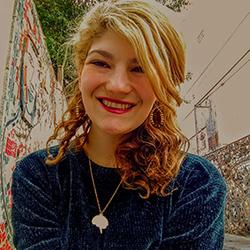As a postdoctoral research associate in the PIPkin (Perinatal Imaging Project: in partnership with families) longitudinal study of variability within and between infants in social, sensory and cognitive development, I will administer prenatal ultrasounds and subsequently, an EEG-based neuroimaging battery over the first months of life. Expectant mothers will be recruited from a range of sociocultural backgrounds at 20 weeks term (n=200). Participating families will complete two antenatal ultrasound scans at 32 and 34 weeks, two newborn home-based neuroimaging sessions, and two neuroimaging sessions at 1 and 5 months of age. Frequent parent-reported monitoring of participating families’ homes throughout the duration of study enrollment will enable us to record the infant’s naturalistic social immersion and context through audio, video, and physiological recordings.
My interest lies in allostatic adaptation in physiological systems which process social information, as well as the development of the body schema, or the awareness of the topographic arrangement of bodily features, specifically for body parts whose function is entwined with their role as sensory organs (mouth, eyes, etc.). Infant’s body schema may provide the foundation mapping one’s own body onto that of others, grounding the sense of self-other distinction (Gallagher & Meltzoff, 1996), connecting early social interactions to bodily awareness (Montirossoa & McGlone, 2020) and relating to individual differences in broader self-regulation (Weiss et al., 2018). The objective is to reconcile our data with theories of ontogeny, influenced by developmental biology, systems, and ecological-evolutionary models.
Across levels of organization from cellular to organism, systems adjust their actions and activity utilizing sensory-driven feedback (Delafield-Butt & Gangopadhyay, 2013; Grillner, 2003). In the womb, anticipatory trajectories of fetal spontaneous movements appear to reflect a ‘body map’, or the somatotopic neural representation of bodily position, physical arrangement of facial features, joints and overall body morphology by the third trimester (Zoia et al., 2007). Hand-to-mouth movements emerge late in the second trimester (Myowa-Yamakoshi & Takeshita, 2006; Reissland et al., 2014), are consistently evident in fetal behavior during the third trimester (Ferrari et al., 2016) and linearly increase from 1 month to 6 months of age (Delaney & Arvedson, 2008), yet are noticeably absent in wake of birth, perhaps to facilitate neonatal feeding. Further, there is recognition of how correspondences between one’s felt body and the sight of others may facilitate preverbal social capacities (Meltzoff, 2007). Despite advances in developmental science of pregnancy and infancy, there is a paucity of work focused on the transformative perinatal period.


